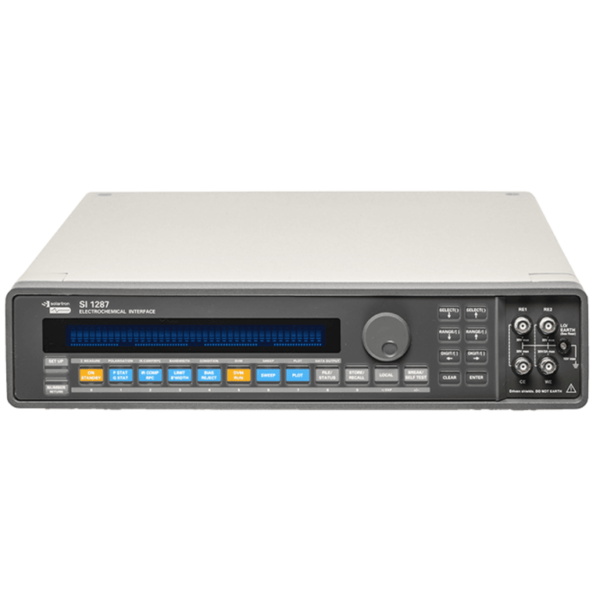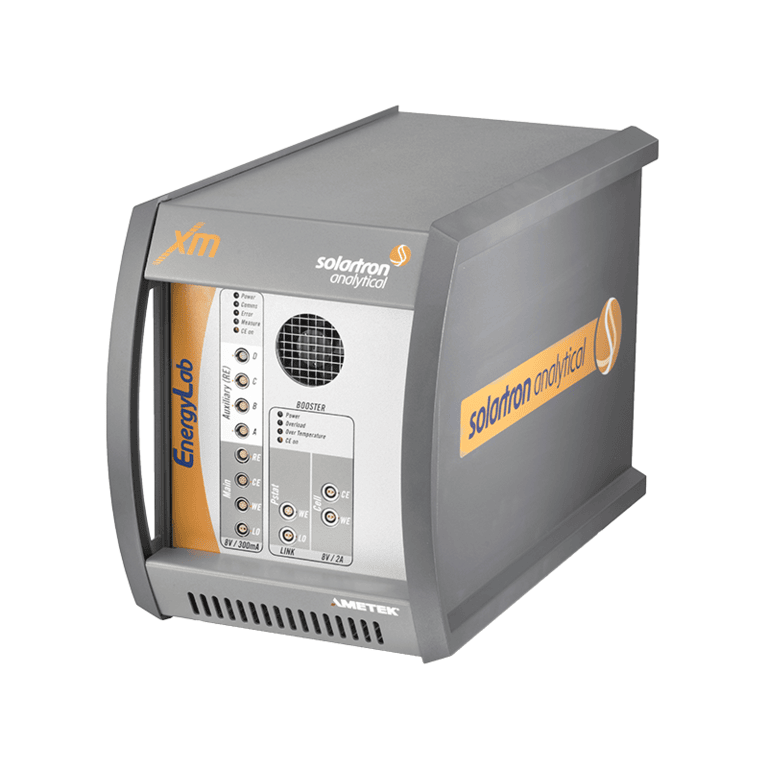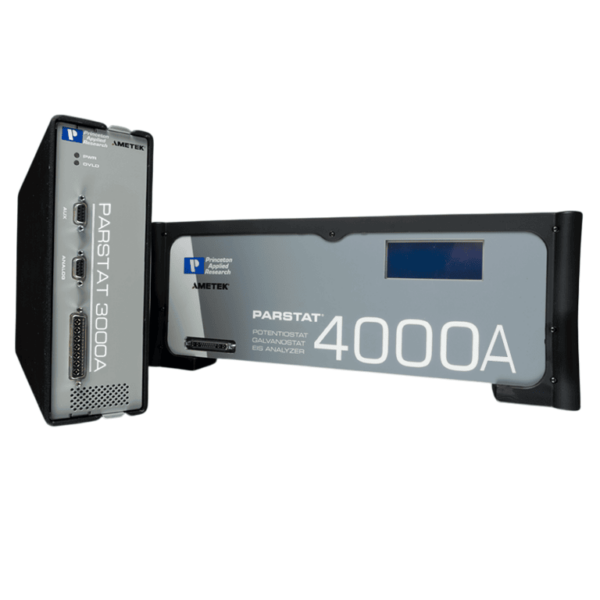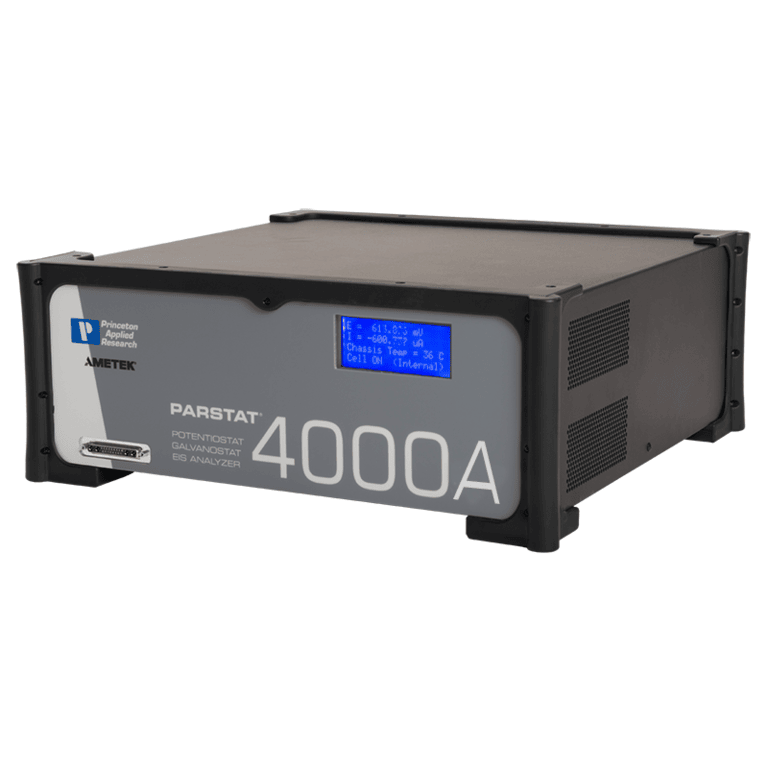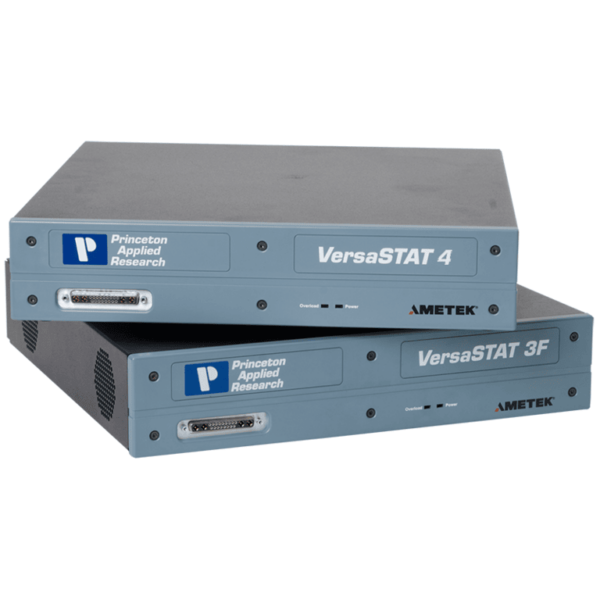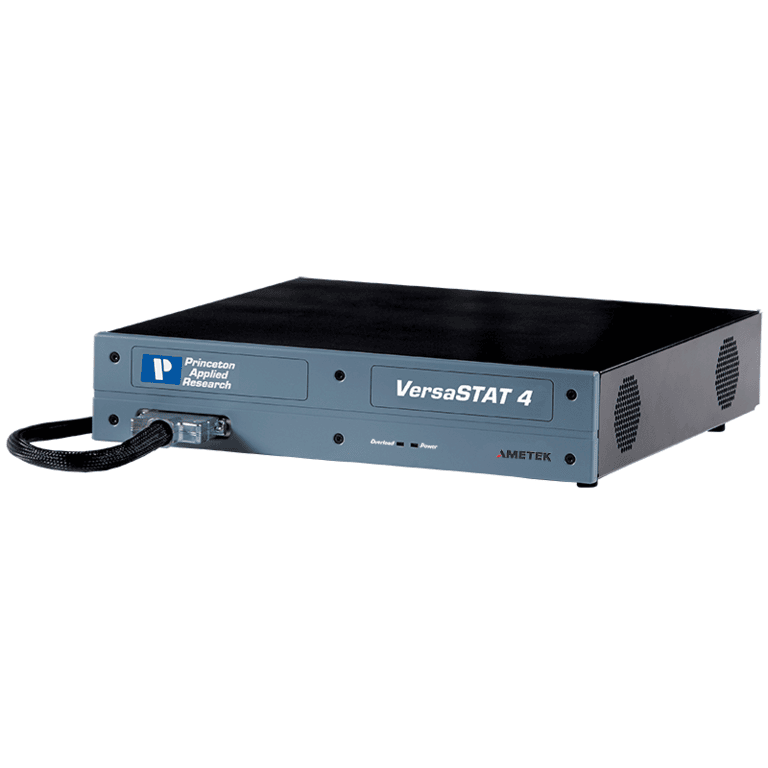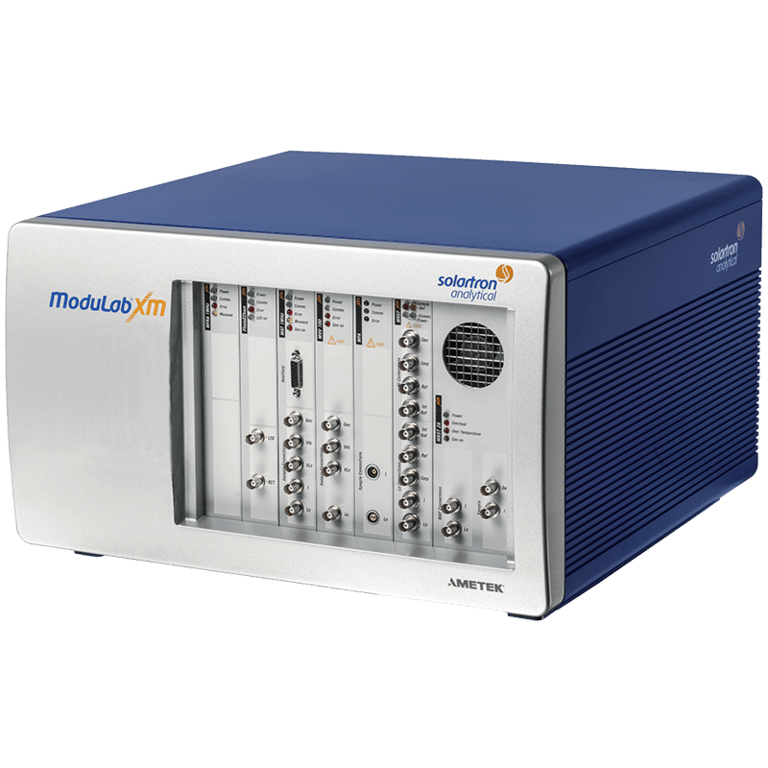Single Channel Potentiostats
Princeton Applied Research and Solartron Analytical provide you with an array of single channel system options designed to fit your accuracy and budget requirements. Our potentiostats provide the best control and measurement of potential, current and impedance…perfect for research level applications.
What is a potentiostat? Potentiostats control a voltage and measure a resulting current. The Control Amplifier outputs power to the counter electrode (also called auxiliary electrode). A feedback loop is established to control the cell potential between the reference and working electrode. This voltage is measured by the input electrometer, that has a high impedance. This current is then measured between the working and counter electrodes while this potential is maintained at the working electrode and reference electrode.
How are potentiostats used? Researchers use our potentiostats to meet the most demanding scientific challenges. This includes testing new chemistries for Li-ion batteries, improving resistance to corrosion, determining concentrations of target analytes.
What is a galvanostat? A galvanostat controls the current flow between the working and counter electrodes while measuring the cell potential between the working and reference electrode. This mode is most commonly used in characterization of energy devices and electroplating. All of our potentiostats can operate also as a galvanostat.
*Princeton Applied Research (PAR) and Solartron Analytical are part of AMETEK‘s Scientific Instruments division, specializing in electrochemical and materials analysis instrumentation.

